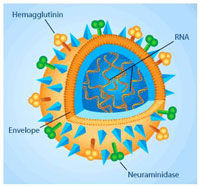Metabolic fingerprints offer fresh clues and a new path toward personalized medicine
The old excuse, "I am only overweight because of my genes," is suddenly gaining credibility as researchers uncover ever more evidence that the way our bodies digest and process nutrients in the food we eat is different for every person. The budding discipline of metabolomics strives to investigate these differences in a scientific manner. Nutrition scientists and food chemists at the Technische Universitaet Muenchen are on the front line: They have joined forces with outside experts to form the Munich Functional Metabolomics Initiative, an interdisciplinary network for driving research in this field.
When it comes to our genes, we are 99.9 percent identical. And yet, every person looks different. But it does not end there. Recent studies confirm that individual differences apply not only to superficial traits – they also define our metabolism. Researchers are now asking how this is even possible considering the pool of nearly identical genomes. Only once the fundamental mechanisms are uncovered can conditions such as diabetes or cardiovascular disease that stem from metabolic disorders be fully understood and more effectively treated. Experts at the Center for Life and Food Sciences Weihenstephan of the Technische Universitaet Muenchen (TUM) have given high priority to the search for answers.
To this end the researchers have initiated a study called HuMet. Fifteen healthy young men were closely scrutinized for four days. They had to fast, eat and drink various types of standardized nutrition, and submit to a variety of physical tests. All the while numerous blood, urine, and breath samples were taken. Hannelore Daniel, professor of nutritional physiology, and Prof. Hans Hauner, a nutritional physician at the TUM, carried out the nutritional protocol and test procedures, while Prof. Thomas Hofmann from the Chair of Food Chemistry and Molecular Sensory Science used the samples for a multitude of tests using his team's high-performance analytic tools.
"In general, all people react similarly to specific nutritional components," says Hannelore Daniel, "but there are big differences in their responses." For example, when a test subject is given a certain amount of glucose, his or her blood sugar level rises and then falls again. But even early results of the HuMet study revealed some astonishing details: In the beginning, on an empty stomach, the values were extremely uniform; however, every test subject responded differently after ingesting glucose. "Obviously all values will rise," Daniel says. "The blood sugar level must go up. But it is very interesting to observe the differences in the way the levels rise and fall off again. Only after four hours were the blood sugar levels of the test subjects level again."
Daniel describes our metabolism as a mechanism that can be pushed and pulled like the bellows of an accordion. One thing the researchers want to determine is just how wide the range is, and modern methods of high-performance analytics make that possible. "The HuMet study actually gave the impetus for the entire field of research," TUM food chemist Thomas Hofmann is pleased to note. "All researchers in greater Munich interested in advancing the field of metabolomics, for example our colleagues from the Helmholz Zentrum Muenchen, are collaborating with us in the Munich Functional Metabolomics Initiative." All participating researchers received a portion of all plasma and urine samples to evaluate using their own special measuring methods. Prof. Hofmann's team relied primarily on the methods of liquid chromatography-tandem mass spectroscopy and NMR spectroscopy.
"We need to develop the methods further to do justice to the complexity of the body's metabolism. Today, we are at a level comparable to that of digital cameras in the 1980s," says Hofmann. "We must increase the resolution of our analytical camera to obtain a sharp image of all metabolic by-products." And if we want to describe metabolic dynamics next, we will need to make a short movie. "For this we want to automate our procedure so that it will deliver a large number of high-resolution images over a short period of time. These can then be combined into a sequence, analogous to a flip-book."
Once this becomes possible, the researchers will be able to look deep into metabolic processes. Their biggest hope: that metabolomics will one day enable custom-tailored therapies for people with metabolic disorders and nutrition plans for people wanting to lose weight.
Other news from the department science
Most read news
More news from our other portals
See the theme worlds for related content
Topic World Chromatography
Chromatography enables us to separate, identify and thus understand complex substances. Whether in the food industry, pharmaceutical research or environmental analysis - chromatography opens up a treasure trove of information about the composition and quality of our samples. Discover the fascinating world of chromatography!

Topic World Chromatography
Chromatography enables us to separate, identify and thus understand complex substances. Whether in the food industry, pharmaceutical research or environmental analysis - chromatography opens up a treasure trove of information about the composition and quality of our samples. Discover the fascinating world of chromatography!























































